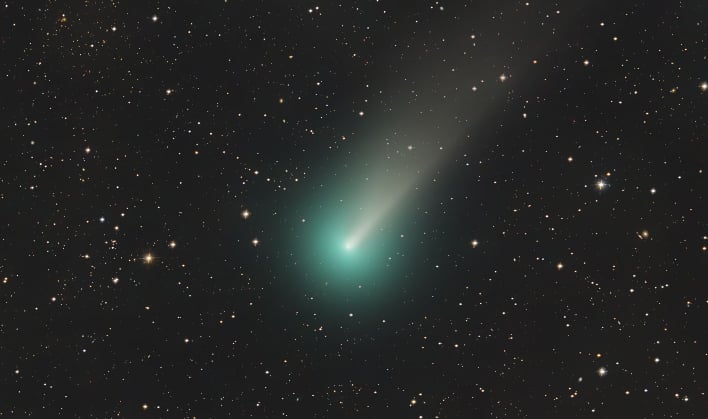How To Watch Comet Leonard's Return To Earth's Orbit After A 70,000 Year Hiatus

Comet Leonard is set to debut in the night skies during the first part of December. This will be the first time the comet has been this close in roughly 70,000 years.
Stargazers have been seeing a lot of action in the night sky as of late. Just last month the Leonid meteor shower put on a show of shooting stars. Earlier in November, NASA was able to track an earthgrazer meteor for an astonishing 186 miles as it traveled across the lower southeast of the United States. And now in the first days of December, onlookers will be able to view Comet Leonard for the first time in about 70,000 years.
Comet Leonard was discovered in January 2021 as it was out past Mars as a faint smudge by G.J. Leonard at the Mount Lemmone Observatory. Comet Leonard is considered to be an inbound long period comet. Long period comets are those that have highly eccentric orbits and periods ranging from 200 years to thousands or even millions of years. A comet itself is an icy, small Solar System body and as it passes near to the Sun warms and begins releasing gasses, or outgassing. This is what produces the visible coma, or what is often referred to as a tail.
It is perhaps a good thing that Leonard has been around the block before. This is because first-time contact comets often become unusually bright as fresh ice sublimates in a fury. When this occurs, it can artificially inflate the predicted brightness as it approaches and give false expectations to just how bright it will appear. Often these first timers will simply fizzle out and produce a lackluster apparition. So, being Comet Leonard has been around before, it may lead to more reliable estimations as to its brightness.
Up until now, Leonard has only been viewable with a telescope or possibly a pair of 50-mm binoculars. But as Leonard gets closer in the next few days, it should become a faint, naked-eye object. Leonard will pass the bright globular cluster M3 on December 2nd and then shoot past just north of Arcturus on December 6th. While having Arcturus nearby, it should make it a bit easier for the untrained eye to spot and follow the comet.

Comet Leonard will pass closest to Earth on December 12th at approximately 34.9 million kilometers away. It will then pass by Venus and then make its closest pass to the Sun again on January 3, 2022. Those in the Northern Hemisphere will have the best chance of spotting Leonard in the first half of December and then it will shift to those in the Southern Hemisphere around mid-December.


